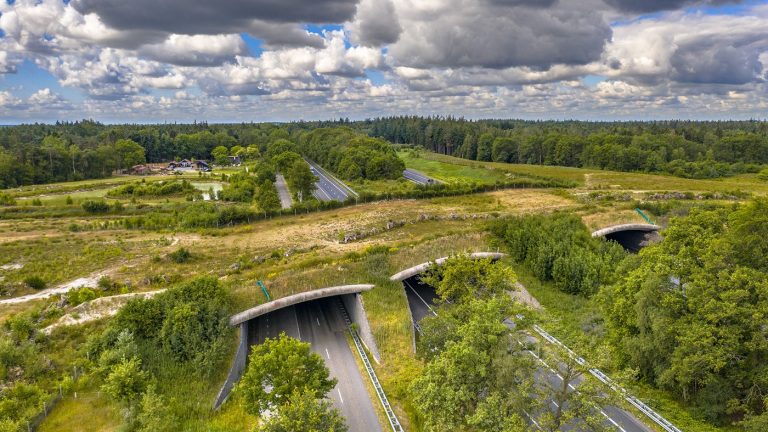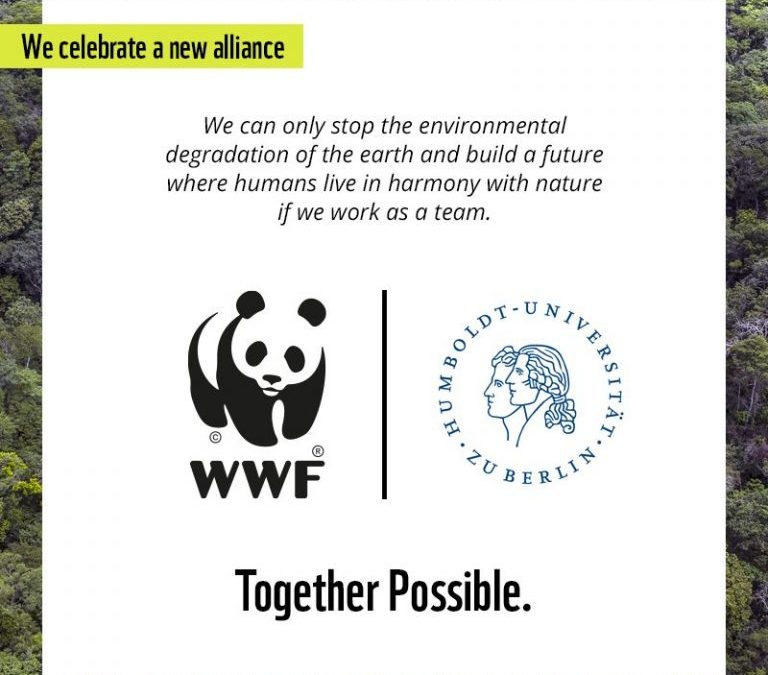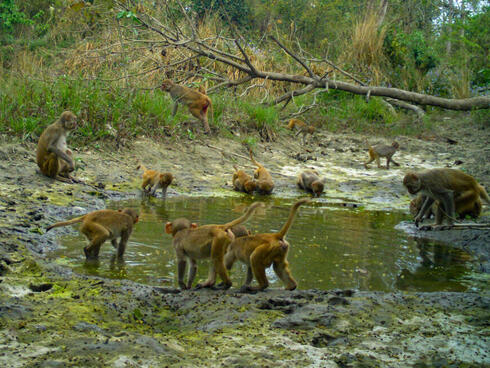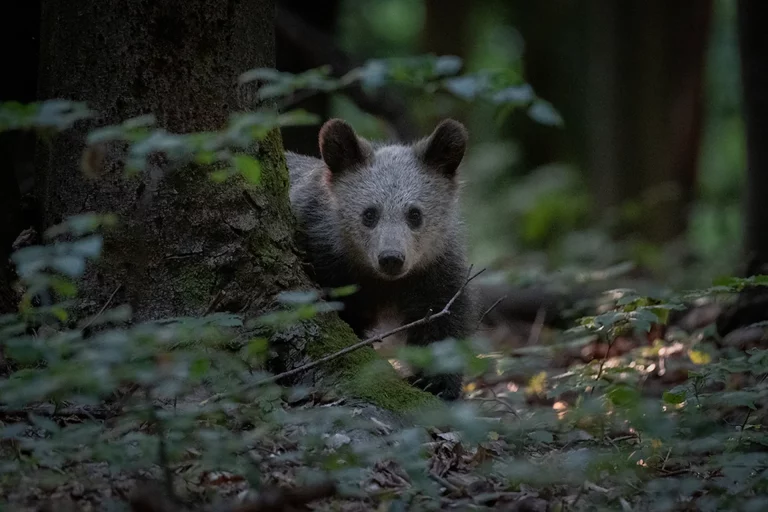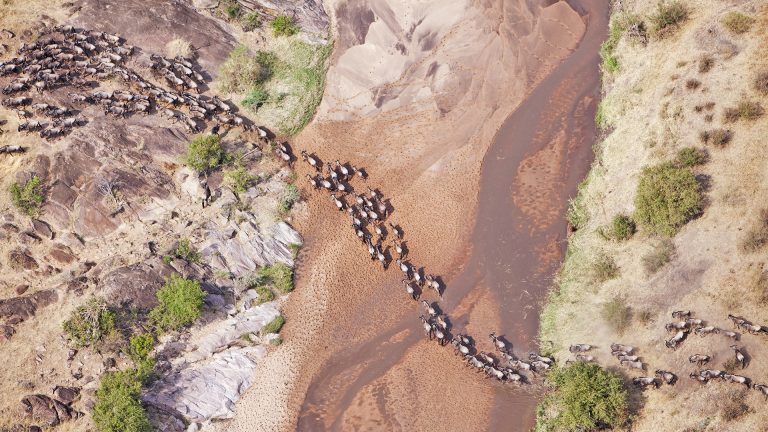
Aerial view of the Blue Wildebeest (Connochaetes taurinus) migration. Up to 1.5 million wildebeest move through the Mara/Serengeti ecosystem each year. This is one of the worlds last great animal migrations. Masai Mara National Reserve. Kenya © Martin Harvey / WWF
June 3, 2022: New research published yesterday in Science maps how animals move between the world’s land-based protected areas for the first time and introduces a new index that measures how connected each of the world’s protected areas (PAs) are, called the Protected Area Isolation index (PAI).
The connectedness of nature, known as ecological connectivity, is fundamental to animal movement between habitats. Connected habitats allow species to move across landscapes to find food and water, mate effectively to maintain genetic diversity and healthy wildlife populations, and adapt to the impacts of climate change.
“We’ve identified the world’s most vital areas for connectivity,” said Angela Brennan, Conservation Scientist, University of British Columbia (UBC), World Wildlife Fund (WWF) Fellow, and the study’s lead author. “These can now be incorporated into global conservation blueprints to capture a dimension of biodiversity not sufficiently considered.”
Despite global policies requiring that protected area systems are well-connected, the functional connectivity of land-based PAs globally has remained largely unknown. What we do know is that the isolation of animal populations interrupts the flow of genes and other vital ecological processes, putting species, habitats and the benefits they provide to humans at grave risk.
This first-of-its-kind research by scientists from UBC, WWF, and the University of Colorado identifies the most important areas for animal movement outside of PAs, and builds upon previous research showing that animals are able to move further through habitats with less human modification.
Further, about 70% of the most important unprotected areas for animal movement also overlap with areas that are prioritized for conservation under global frameworks for their rich diversity of plant and animal species.
With this knowledge, governments, the private sector, conservationists and other stakeholders can better prioritize conservation actions for PAs and the tracks of land needed for large-scale animal movements between them (ecological corridors), ultimately slowing the rapid loss of nature witnessed around the world.
This research introduces the Protected Area Isolation index (PAI), an estimation of isolation of a PA based on two primary factors: the proximity of PAs to one another, and a synthesis of how dozens of mammal species move across landscapes with different degrees of human modification. Never before has there been a scientific indicator that can be used globally to measure how isolated the world’s PAs are from the viewpoint of moving animals. And unlike other global connectivity indicators, it factors in published data on animal movement in response to both intact and human-modified landscapes.
The PAI can play a key role in the next decade of international conservation efforts. 196 of the world’s governments are Parties to the Convention on Biological Diversity (CBD), which is currently setting the agenda for the next ten years in its ‘Global Biodiversity Framework’ (GBF), connectivity provisionally included in several of the framework’s targets. However, previous GBF targets relevant to connectivity have fallen short. With the development of this established scientific method for assessing functional connectivity at the global scale, it will be much more feasible to track progress.
“For the first time, we have a metric that reflects how connected protected areas are for mammals and it can be used by nations to monitor their progress towards global connectivity goals,” said study co-author Robin Naidoo, Lead Wildlife Conservation Scientist, WWF-US. “Using the PAI can empower country signatories of CBD to visualize and measure the ability of animals to move between protected areas, track progress over time, compare how countries are performing relative to one another, and enhance transparency and accountability.”
The PAI will also help accelerate efforts to secure connectivity on ground, offering a readily usable methodology to measure connectivity change over time – thus enabling us to better understand what interventions are working, and what are not. WWF recently launched a new initiative – Wildlife Connect – which aims to protect, manage, and restore ecological connectivity in large landscapes, and will be rolling out the PAI approach in landscapes as vast as the 1 million square km Chaco Pantanal in South America. Wildlife Connect, cuyo objetivo es proteger, gestionar y restaurar la conectividad ecológica en grandes paisajes, y pondrá en marcha el enfoque del IAAP en paisajes tan vastos como el Chaco Pantanal, de un millón de kilómetros cuadrados, en Sudamérica.

